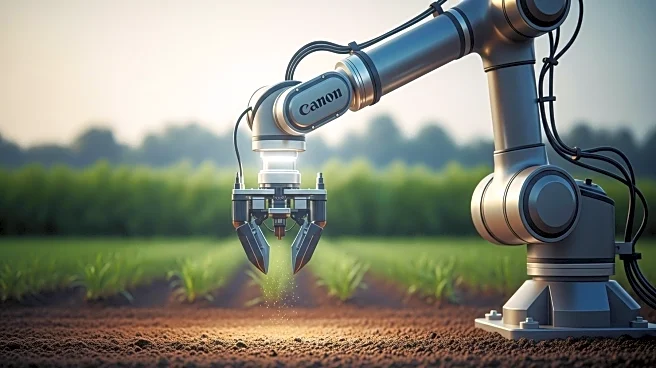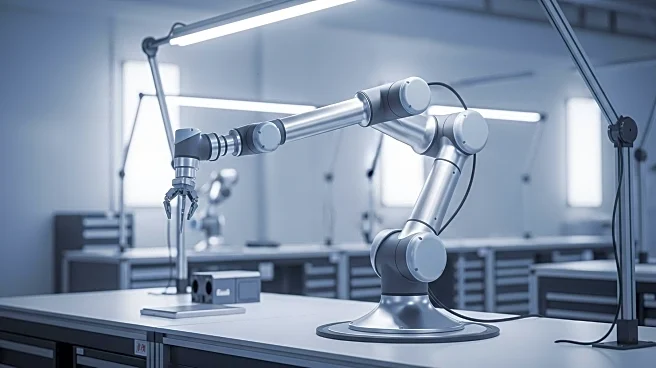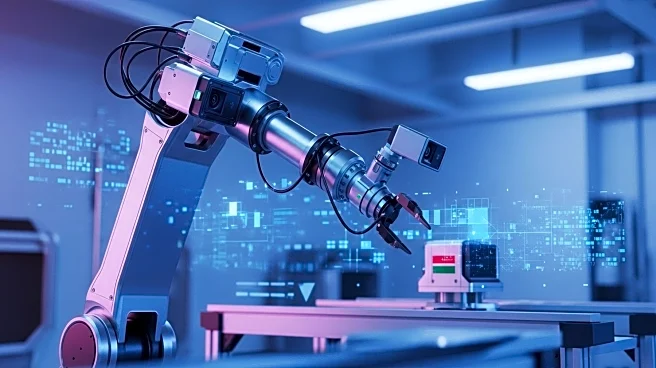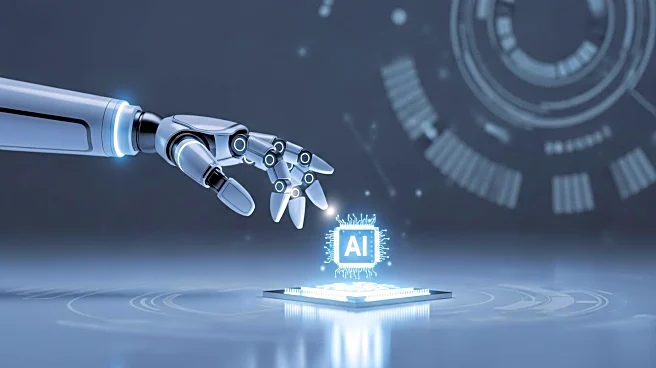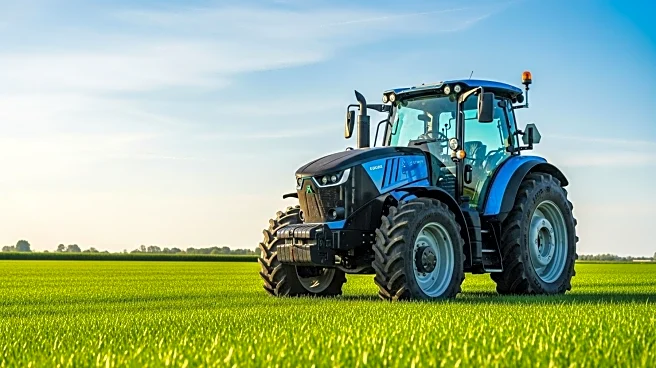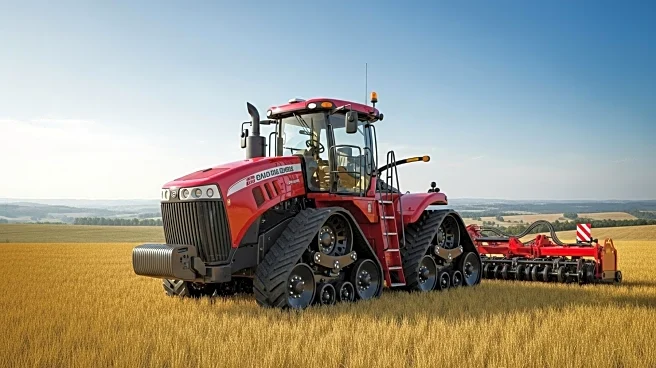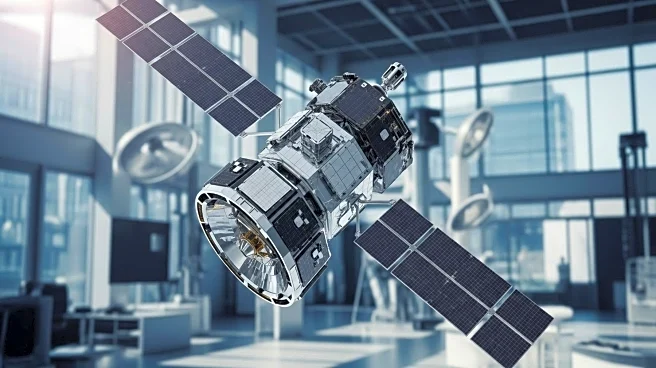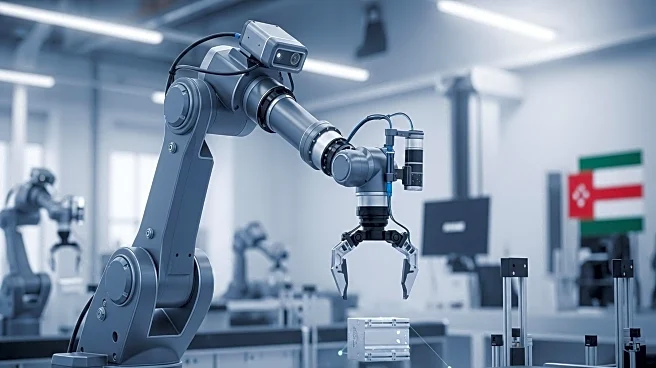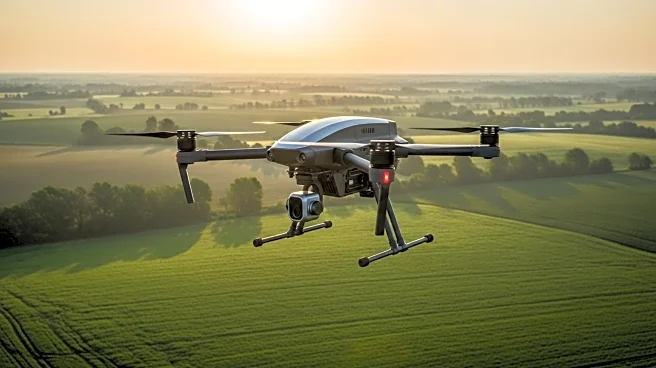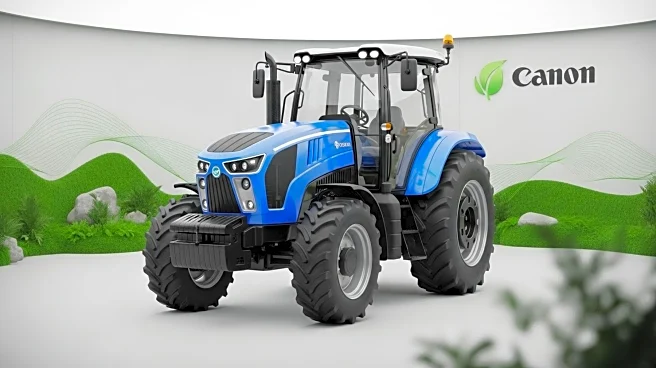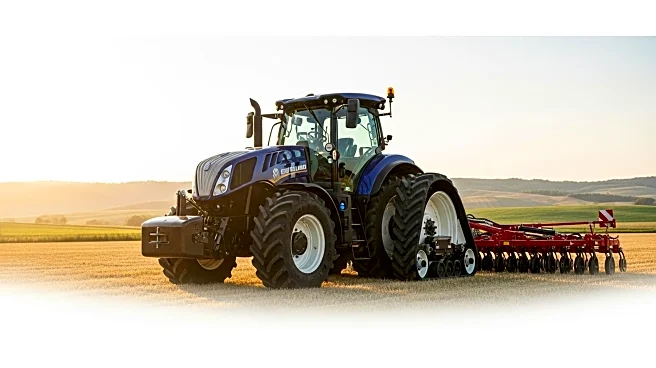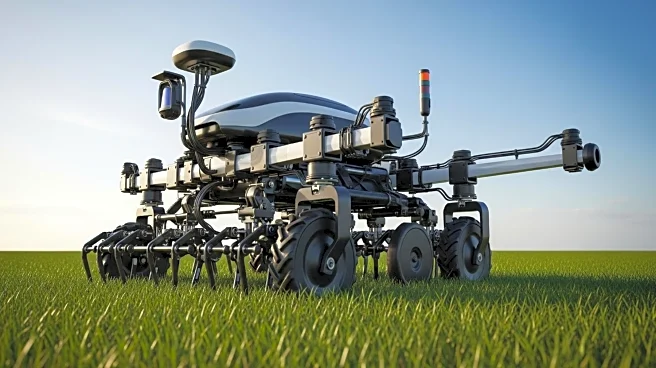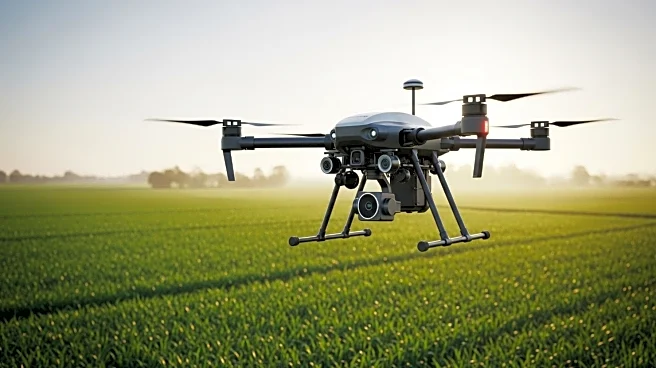What is the story about?
What's Happening?
Farmdroid, a Danish manufacturer, has introduced new seeding elements for its field robots, allowing them to sow seeds with a diameter of up to 14 mm. This development enables the robots to plant a wider variety of crops, including maize, peas, beans, chicory, witloof, onions, spinach, and red beet. The new seeding elements feature a hopper capacity of 7 liters, adjustable seeding depth from 10 to 50 millimeters, and row spacing between 25 to 90 cm. Additionally, these elements increase the robot's working speed to 650 m/s, offering a 20% higher capacity compared to previous models without compromising precision. The new seeding elements will be showcased at the Agritechnica 2025 trade fair in Hannover, Germany, and will be available for purchase starting February 2026.
Why It's Important?
The introduction of these advanced seeding elements by Farmdroid represents a significant step forward in agricultural technology, particularly in the field of precision farming. By expanding the range of crops that can be sown and increasing operational efficiency, these robots can help farmers optimize their planting processes, potentially leading to higher yields and reduced labor costs. This innovation is particularly relevant as the agricultural sector faces increasing pressure to produce more food sustainably and efficiently. The ability to retrofit older models with these new elements also ensures that existing Farmdroid users can benefit from the latest advancements without needing to invest in entirely new equipment.
What's Next?
Farmdroid plans to publicly display the new seeding elements at the Agritechnica 2025 trade fair, providing an opportunity for industry stakeholders to assess the technology firsthand. Following the exhibition, the elements will be available for purchase in February 2026, allowing farmers to integrate them into their operations ahead of the next planting season. As the agricultural industry continues to embrace automation and precision farming, other manufacturers may also innovate similar technologies, potentially leading to increased competition and further advancements in the field.
Beyond the Headlines
The development of these new seeding elements by Farmdroid highlights the growing trend towards automation in agriculture, which could have broader implications for labor markets and rural economies. As robots become more capable of performing complex tasks traditionally done by human workers, there may be shifts in employment patterns, requiring new skills and training for the agricultural workforce. Additionally, the increased efficiency and precision offered by such technologies could contribute to more sustainable farming practices, reducing waste and environmental impact.
AI Generated Content
Do you find this article useful?
